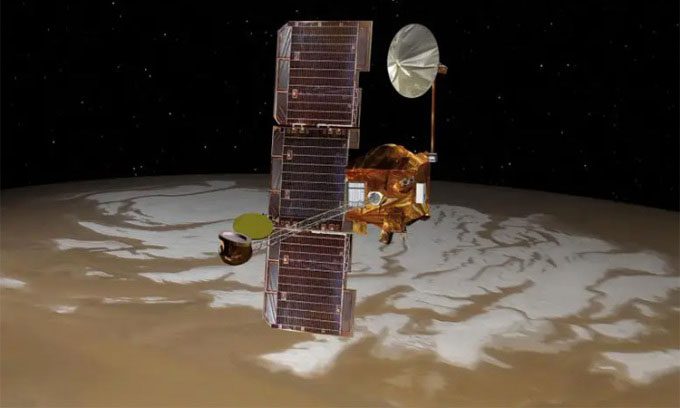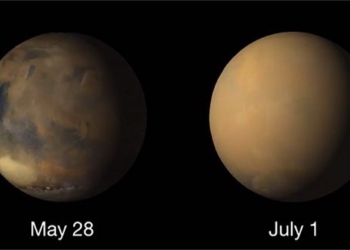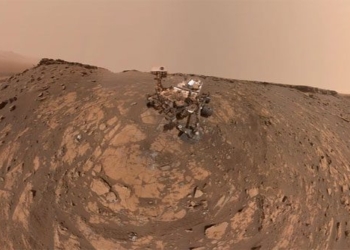Errors in calculating the remaining fuel of the 22-year-old orbital spacecraft Mars Odyssey led experts to believe it was on the verge of completing its mission.
For nearly two years, NASA engineers were concerned that the fuel supply for the Mars Odyssey orbiter was running low, potentially leading to a tragic end for this valuable spacecraft. However, it turned out they had miscalculated the amount of fuel remaining in the tank of Mars Odyssey, as reported by Gizmodo on March 16.

Simulation of NASA’s Mars Odyssey spacecraft flying over the southern pole of Mars. (Image: NASA/JPL-Caltech).
Mars Odyssey has been orbiting Mars for over two decades, covering approximately 2.21 billion kilometers in space. Launched in 2001, the orbiter carried 225.3 kg of hydrazine fuel for its operations. However, the spacecraft lacks a fuel gauge, which has made it difficult for mission specialists to accurately determine the remaining fuel in the tank.
To assess the fuel level, the team in charge heats two of the spacecraft’s propulsion fuel tanks and observes how long it takes to reach a specific temperature. “Like a teapot, a nearly empty fuel tank will heat up faster than a full one,” NASA explains. This method is not perfect, but it still aids experts in estimating the remaining fuel in the tank fairly well.
In the summer of 2021, estimates suggested that Mars Odyssey was nearing depletion, with only about 5 kg of fuel left. By the end of January 2022, the team calculated that there was only 2.8 kg of hydrazine remaining. This indicated that the spacecraft would run out of fuel in less than a year, sooner than originally predicted.
The mission engineering team was quite perplexed. The cause could be that Mars Odyssey was leaking fuel, or the estimates were inaccurate. They spent months trying to find the reason before inviting an external consultant, Boris Yendler, who specializes in estimating spacecraft propulsion fuel.
After studying the internal operations of Mars Odyssey, Yendler identified the reason behind the fuel disappearance. In fact, the spacecraft uses heaters to prevent components from freezing in space, including a heater that connects the fuel tanks. This heater caused the propellant to heat up faster than expected, leading the mission team to calculate a lower fuel level than reality.
The mission team then recalculated the fuel amount for Mars Odyssey, taking into account the additional heat. As a result, the orbiter is expected to continue operating well into 2025. However, the team is still working on refining their measurement methods to achieve even greater accuracy.
Mars Odyssey is a crucial member of NASA’s “army” of Mars missions. This orbiter not only relays data between NASA’s ground control and rovers but also aids in detecting minerals, ice deposits, and potential landing sites.





















































